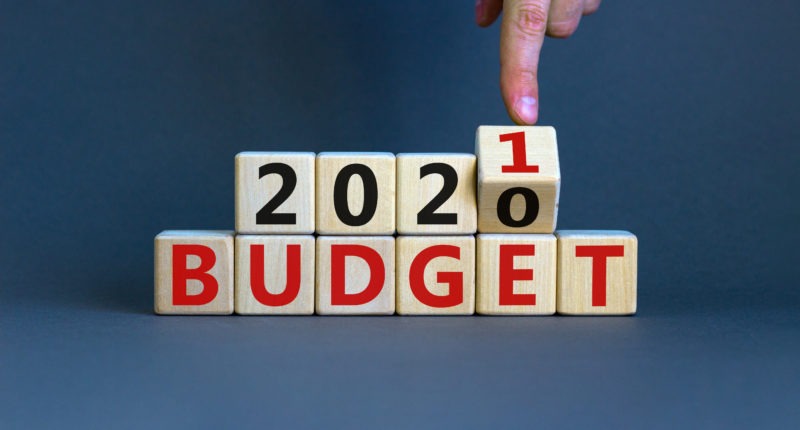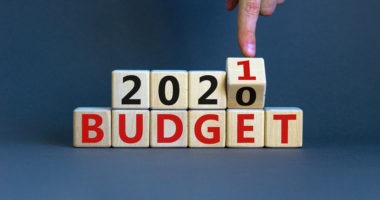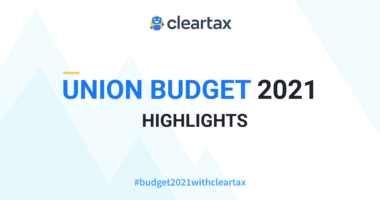The Central Government is constitutionally mandated in Article 112 to annually present the estimates of Revenue and Expenditure of India’s Government. It is also referred to as “The Annual Financial Statement of India”. The Finance Minister of India presents the Union Budget in the Lok Sabha on 1st February. For the first time, the Budget documents, presented along with the Finance Minister’s speech, will not be printed.
The significant components of the Budget are the Revenue Budget and Capital Budget.
Revenue Receipts and Revenue Expenditure together constitute the Revenue Budget. If the revenue expenses are more than the revenue receipts, it indicates a Revenue Deficit.
Revenue Receipts in the annual financial statements are the estimation of collection of taxes, other duties levied by the union government after taking the effect of taxation proposals brought in the Finance Bill. It also includes revenue from other sources like interest and dividend on investment and fees collected from the government’s services.
Revenue Expenditure includes expenditure for interest payment on the debt, government departments’ operational expenses, granting subsidies, etc. Grants (revenue or capital) given to state governments/Union Territories and other parties are also treated as revenue expenses.
Capital Budget is a combination of Capital Receipts and Capital Expenditure.
Capital Receipts include funds raised from the public, a loan taken from RBI or foreign government and bodies, sale of treasury bills, disinvestment receipt and recoveries of loans from the state, Union Territory government and other parties.
Capital Expenditure is the amount spent on assets like building, machinery, etc., investment in shares or other instruments, and granting loans by the central government to the state or Union Territory government.
The Budget is presented through the Finance Bill. It is a mandatory document to be presented before the Parliament as per the Constitution of India. The Lok Sabha has to be passed to come into effect for the financial year starting from 1st April. It contains imposition, abolition, remission, alteration or regulation of taxes proposed in the Budget.
Also Read: 2021 Union Budget to Go Paperless This Year
The Annual Financial Statement represents (a) the Actual expenditure of the previous year, (b) Budget estimates of the coming financial year and (c) estimates of the current year. The statement is divided into three parts:-
(i) The Consolidated Fund of India (CFI): It consists of all the information about revenue received by the government, amounts raised from loan and funds received from recovering the loan granted. Government expenditure is incurred from this fund and any amount to be withdrawn from such fund is only after due authorisation of the Parliament.
(ii). Contingency Fund of India: The fund is maintained to meet any unforeseen expenditure as per Article 267 of India’s constitution. The fund can be withdrawn after the assent of the president followed by approval in Parliament. Also, the equivalent amount has to be refilled from the Consolidated Fund of India.
(iii) The Public Account: The money held in Public accounts are set apart for specific objects, like provident funds, primary education, road development, etc. To transfer any amount from the Consolidated Fund of India to Public account requires parliament approval. Further expenditure from the Public account for specific objects will again require consent from the Parliament.
The estimates of expenditure from the Consolidated Fund of India included in Annual financial statements and required to be voted by Lok sabha are submitted in the form of Demand for Grants for each Ministry or Department.
The Fiscal Responsibility and Budget Management (FRBM) Act, 2003 mandates Macro-Economic Framework Statement is presented to the Parliament under section 3(5) of FRBM Act, 2003. It highlights the GDP growth rate, the fiscal balance of the government and external sector balance, the domestic economy and the stability of the external sector of the economy. It also presents the assessment on the growth prospects of the economy and the statement of underlying assumptions.
Medium-term Fiscal Policy cum Fiscal Policy Strategy Statement is presented to the Parliament under section 3(2) of the FRBM Act, 2003. The statement sets out three-year rolling targets for six specific fiscal indicators which are in relation to GDP at market prices, namely (i)Primary Deficit, (ii) Revenue Deficit, (iii) Fiscal deficit, (iv) Tax Revenue, (v) Non Tax revenue and (vi) Central Government debt. It shows the balance between the revenue receipts and expenditure, the underlying assumptions and the evaluation of the use of capital receipts for the creation of productive assets. It explains how the current policies conform to sound fiscal management principles and rationale for any major deviation in key fiscal measures.
In addition to above, documents like Receipt Budget, Expenditure Budget, Expenditure Profile, Scheme Profile, Public Enterprises Survey, Defence Services Estimates are in an explanatory form for above mandatory documents for better understanding and further references.
‘Memorandum Explaining the Provisions in the Finance Bill’ facilitates understanding the provisions and their implications of taxation proposals contained in the Finance Bill.
From the Year 2017-18 onwards the Finance Ministry had decided to present the Outcome Budget as part of the Budget document. In addition to the financial outlays data, It is a consolidated document with reports of expected output and expected outcomes of the schemes of 68 Ministries and Departments. It gives the accountability of the expenditure incurred for each scheme and helps the government analyse the various ministries’ performance. The introduction of the Outcome Budget has brought major Public schemes and projects under an Output-Outcome Monitoring framework.
For any clarifications/feedback on the topic, please contact the writer at namita.shah@cleartax.in

I’m a chartered accountant and a functional CA writer by profession. Reading and travelling in free time enhances my creativity in work. I enjoy exploring my creative side, and so I keep myself engaged in learning new skills.





